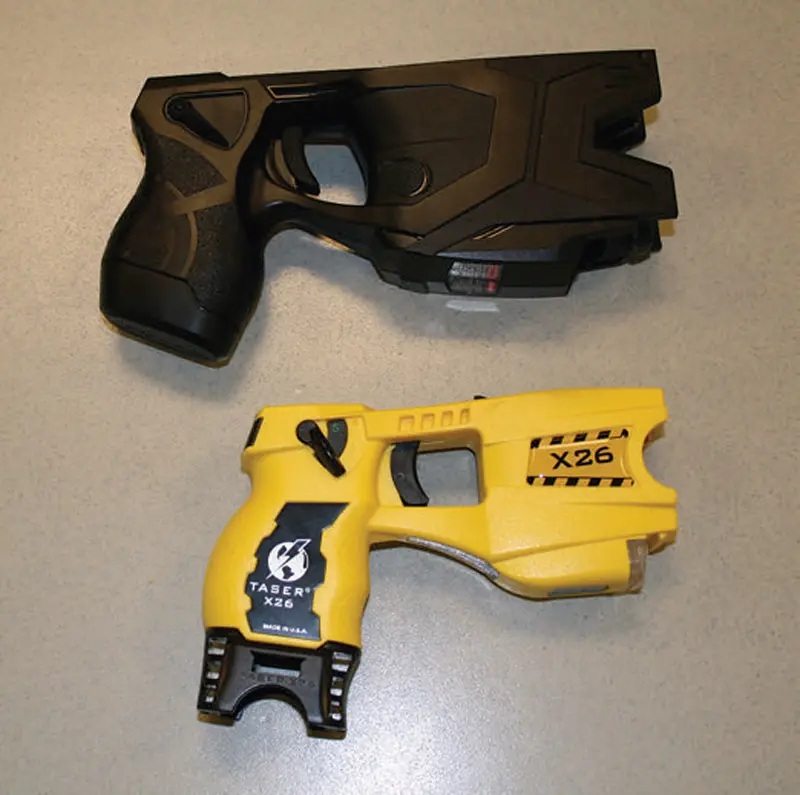
Although it usually takes me several times to remember a mistake enough to correct my conduct, I can vividly remember some 50 years ago sticking a key into a wall outlet and my Dad wisely informing me, “That’s called electricity.”
Although I have had a few run-ins with the magic juice that flows through metal since then, I have never again stuck anything in a wall socket that didn’t look like a plug. If only all lessons were so well remembered.
It’s no great surprise that electricity was turned to as a base for a non-lethal tool for law enforcement to use as an alternative to deadly force. Remember some of the tools that looked like cattle prods that were around for law enforcement in the 1980s? Although Hollywood made them look like the magic fist that put all the bad guys down, they were mostly less effective than portrayed.
Back when I was on the job full-time, they were all that was available but none of us used them because they mostly just made the subject mad. When I had the opportunity to attend a training with the Sheriff’s Office where I now serve as a Reserve, I jumped at the chance to experience this Star Trek Phaser technology. Sometimes Hollywood really does guide technology.
Table of Contents
ENTER THE TASER
There are a couple of reasons the new Taser works better than the old stun guns. One is the configuration of the electricity the device emitted. Early devices only affected the sensory nervous system. The central nervous system uses electrical pulses to communicate reactions to stimuli throughout the body.
The new Taser technology mimics these pulses in the nerves and interferes with the communication between the nerves and the muscles. Instead of a stun, what we end up with in the new technology is a real Neuro-Muscular Incapacitation (NMI). Also with the old technology, the shock was localized to one spot, whereas the probes on the new Taser spread out and run the charge through a larger area of muscle.
There’s been a lot of media hype about the voltage. The unit is capable of putting out 50,000 volts, which are necessary to get the electricity through heavy clothing and other materials. Voltage in electricity is much like pressure in a water hose. The pressure controls the speed and movement of the water through the hose. Voltage does the same with the electrons flowing through the conductor.
Amperes are the actual measure of current flowing through the conductor, which would be like the water in the hose. This is what makes electricity fatal.
A wall socket is capable of emitting 15 or so amps depending on the draw and the breaker. Under the right conditions, it will lock a human up even though it’s throwing only 120 volts. With Taser technology, the extremely short pulses, which mimic the pulsed communication the body uses, keep the average current emitted by the new Taser under .004 amps. There is a bigger danger of injury to the Tasee from falling than the shock. This must be taken into account when using the Taser.
Taser’s first model, the M26, came out in the late 1990s and has been refined over the years to the X26, which came out in 2004.
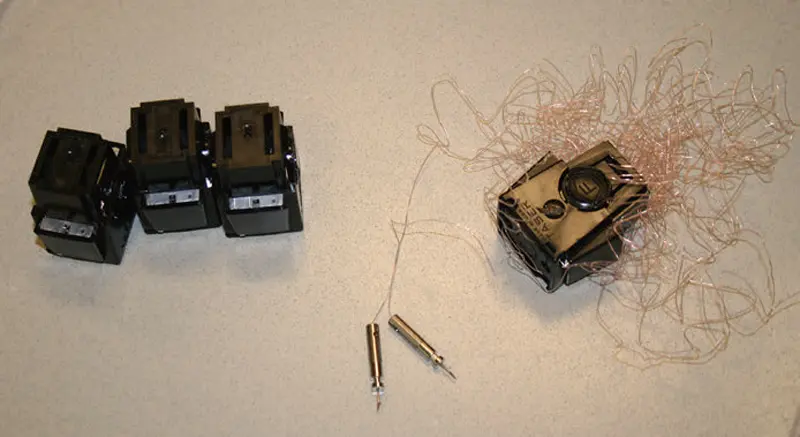
TASER X2 AND X3
The X26 is a single-shot Taser that shoots two probes from a cartridge into the subject and delivers the charge for five seconds. If the subject never had the learning experience of sticking a key into a wall socket, the user can remind the bad guy with a second (or as many as it takes) exposures to gain compliance.
The X26 had been the standard but now is being replaced by the X2 and X3, which are two- and three-shot models respectively. There are also numerous improvements to the system that add to the user friendliness of the unit.
Accidental discharge of the X26 cartridge can occur due to static electricity. The X2 and X3 cartridges discharge differently and are not subject to static or outside arcing. This makes them safer, although the user still needs to keep the business end pointed away from his own body parts.
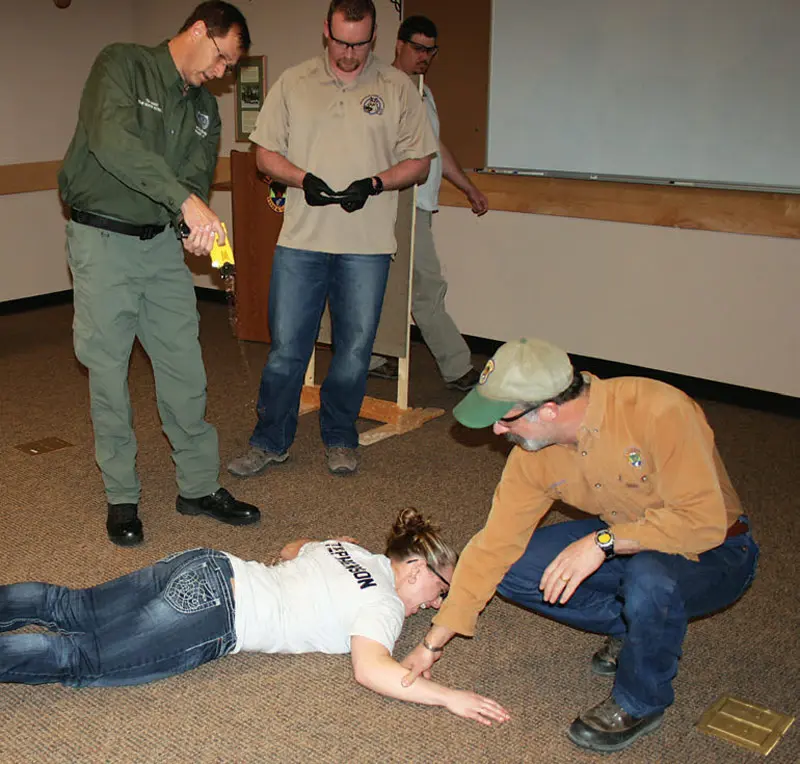
The X2 cartridges are called Smart Cartridges because they have a chip in them that actually communicates more information to the device, such as how many times the subject was exposed and how many cartridges were fired. This enhanced data log will show warning arcs, how many times the subject was exposed before compliance, date and time, and other info that will confirm or disprove a Tasee’s claim of excessive force.
Although the cartridges look different and have different electronics, inside the mechanics of the darts and expulsion are similar. Each cartridge has two probes that are propelled to the target by releasing a charge of compressed nitrogen into the chambers that house the probes.
The probes stick into the target and have a small barb that holds the probe on its target while the subject is being exposed to the five-second charge. As the probes travel to the target, a fine wire unravels and conducts the charge to the probes. The probes have a trajectory that arcs them away from each other, so they strike the target farther apart as the distance increases.
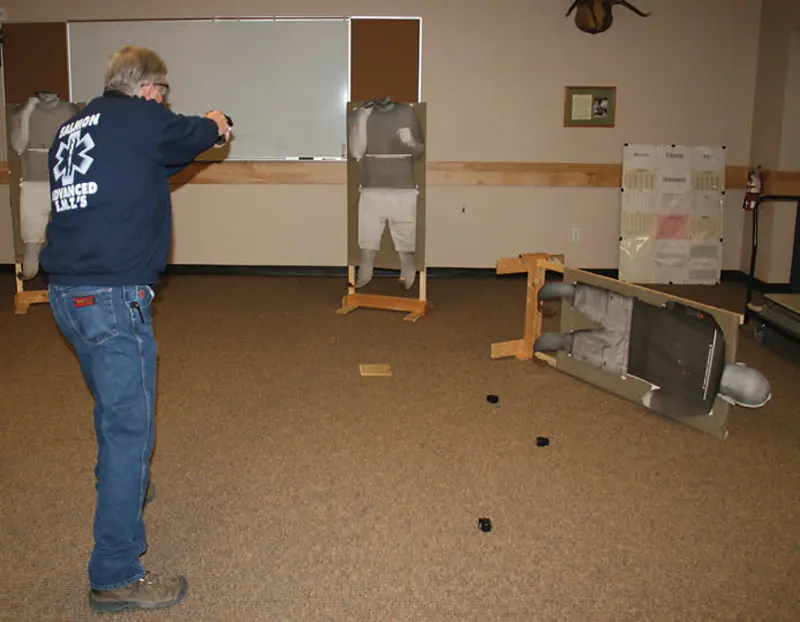
The main differences between the cartridges are the size and weight of the probe and the distance they can be deployed at. The twenty-five foot cartridge seems to be the most popular with patrolmen.
The Drive Stun applies the Taser directly to the subject’s body. It can be used in a close-up encounter or can complement the exposure of the subject if he resists the shot.
Sometimes one of the probes doesn’t completely puncture the clothing or misses completely. By touching the front of the Taser to the person’s body and re-exposing them, the same result can be achieved as if both darts had originally made contact. Spreading the electrodes apart yields better results. If the dart is in the middle of the back, touching the back of the thigh will send the charge across that area. Also, crossing the pelvic area spreads the incapacitation through muscles used for standing, which will put the Tasee down more effectively.
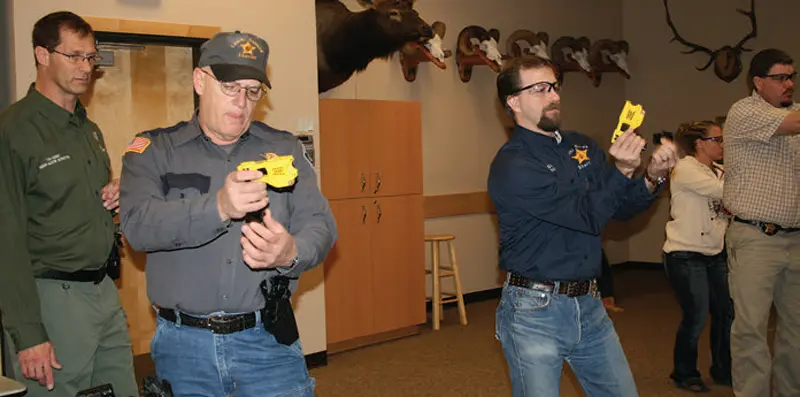
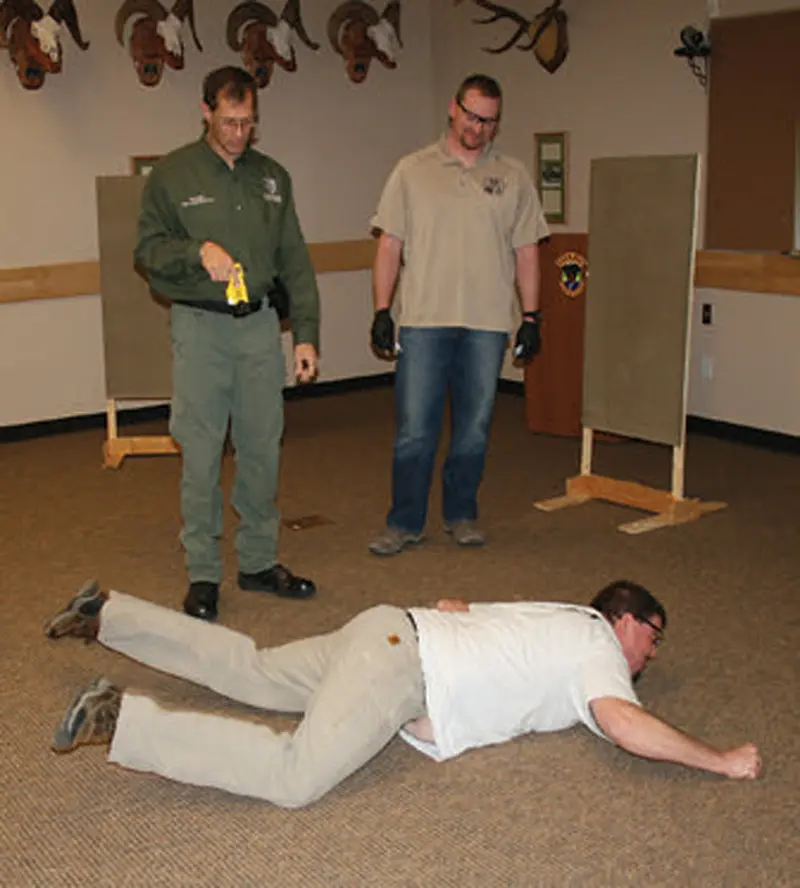
AIMING AND SIGHTING
This brings us to an important part of Tasers: the aiming point. We don’t want the dart making contact with the subject’s face, head, or eyes. The eyes will cause more harm than we want to inflict, and the darts might bounce off the head and not be fully effective. Genitals should also be avoided.
The best way to zap someone is from the rear. This takes the eyes out of the picture and, if the shot is below the shoulders, one of the probes will be below the belt line, giving the person full benefit of the exposure. Sometimes the subject will be exposed from the front. The aiming point needs to be lower on the body than the center mass we are all accustomed to. This will help avoid the face and eyes.
The Taser has a laser sighting system. There are also front and rear sights molded on the top of the unit, but the lasers are faster in that the unit doesn’t have to be brought up to the line of sight to deploy. Two lasers are emitted from the front of the gun when the safety/ on-off switch is activated. These lasers show where the probes will contact the subject’s body. The bottom laser blinks, so the user can quickly sight knowing where the top probe will strike.
TASER TRAINING
During the Sheriff’s Office training that I attended, one of the exercises we did with the X2 was multiple subject exposures. This is one of the nice things about the two-shot model. The extra shot comes in handy if the first one is not effective and the subject is not yet under control. The officer could use the drive stun, but probes in the subject are a better choice, so a second shot is preferable. Also the current flows among all the probes that are in the subject.
On the multiple-shot exercise, I found it effortless to expose the first target and, while still moving, put the lasers on a second target, which was to my side, looking over my shoulder with peripheral vision and planting the probes in the second target while keeping an eye on the first.
The X2 can also be manipulated to expose both shots or volleyed between the two, depending on which subject needs more reminding to behave. The unit delivers the second shot instantaneously upon pulling the trigger, like a semi-auto handgun.
You don’t want to get tangled up in the wires when the probes are under power, because like mace, electricity doesn’t discriminate between good guys and bad guys. It’s just in a hurry to get home and will take the shortest route.
Along with the laser sighting system is a light. The Taser can be set to the user’s preference with the laser and light both on, both off, or one on and one off.
CARRY
The Taser is designed to be carried on the belt. I know … another thing on the belt. Holsters are made by several companies. I was using one from Black- Hawk. I like the BlackHawk because I wear a BlackHawk duty holster with the SERPA locking system. This holster releases the Taser in the same manner as my duty holster and is easy to manipulate. I prefer mine in a crossdraw position, and the BlackHawk is adjustable to tilt the Taser so I can get a hand on it.
The X2 and X3 are slightly larger than the X26, but when they’re on the belt, there isn’t much difference in how they hang. Considering the X26 holds its extra shot on the butt of the handle, it’s actually more cumbersome than the X2.
TASER CAM
Taser has also come out with Taser Cam. It adds some length to the handle of the unit, but with all the camcorders out there these days looking for the next YouTube sensation, it’s nice to have one on your side that tells the whole story.
Taser Instructor Tom Munsey did an excellent job of presenting the material and offered everyone in the class a chance to experience an exposure. This held particular interest to me, not so much for the exposure, but as an EMT who might have patients with probes in them, I wanted to have some experience removing them.
On the end of the probe is a point with a small barb that helps attach the probe to the subject’s epidermis. Once the subject is handcuffed and under control, the probe can easily be removed by pulling it out quickly, like removing a bandage on a hairy arm. I was impressed that the folks who were Tased in class just exhibited a small red mark. The wound didn’t even bleed.
With all the cameras watching over us looking for excessive force complaints, this Taser technology is a step in the right direction. Back in the day, I had a TV crew catch me on camera using the PR-24 baton to control four subjects who had switched from fighting each other to making me the common enemy. I had the opportunity to watch myself on Sunday afternoon taking the PR-24 out for a stroll.
Was it excessive force? Absolutely not: the odds were four to one, and backup got there while I had one in an armlock and the others on the ground holding their knees. Nobody was hit after they stopped fighting. Did it look excessive? Ohhh yeah.
I have seen people Tased, and it looks much kinder and gentler. Although they make funny noises, they’re not rolling around holding their knees and screaming while you’re trying to put on the cuffs.
The Taser works really well, but like all tools, it’s not 100% effective and should be backed by deadly force.
I just can’t wait until they get rid of those silly wires and make a true Star Trek Phaser.

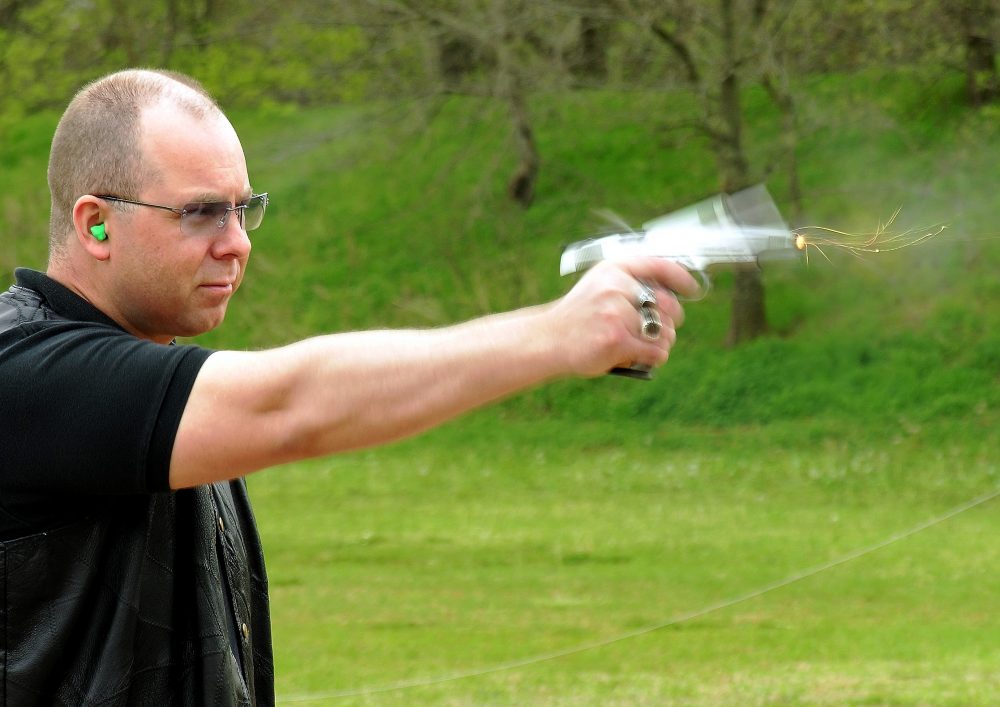
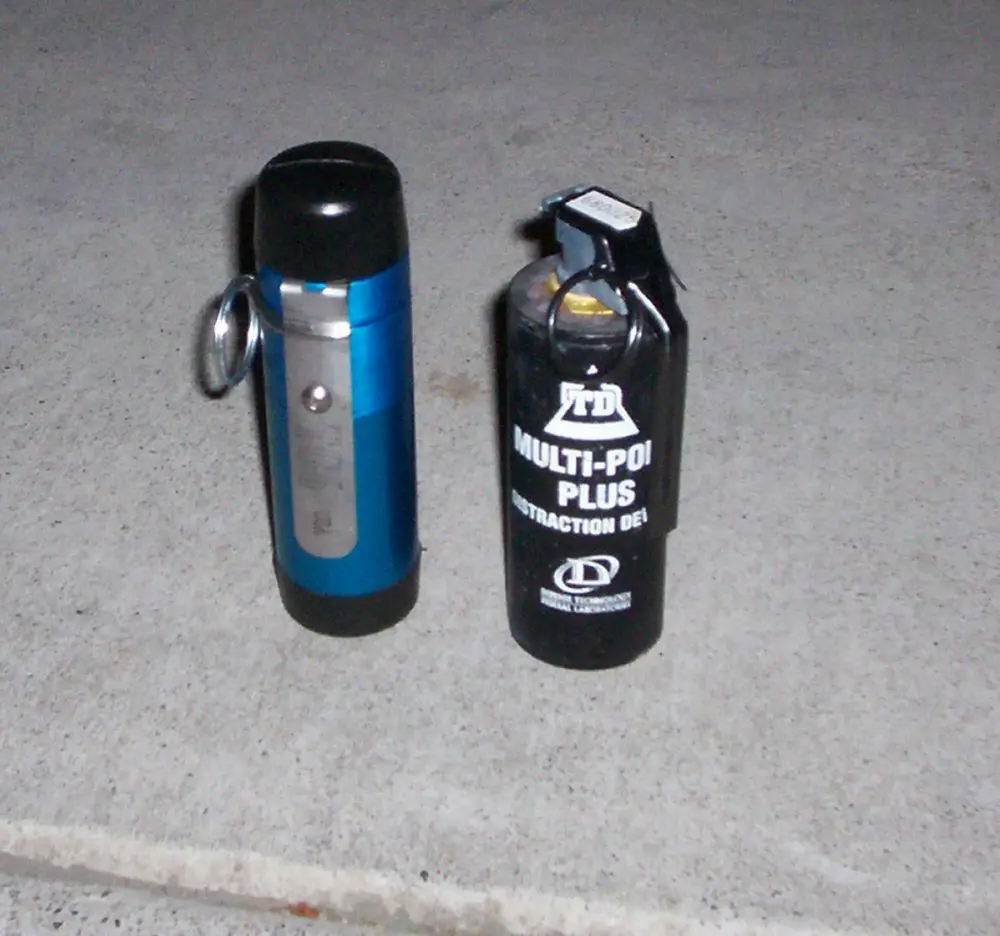
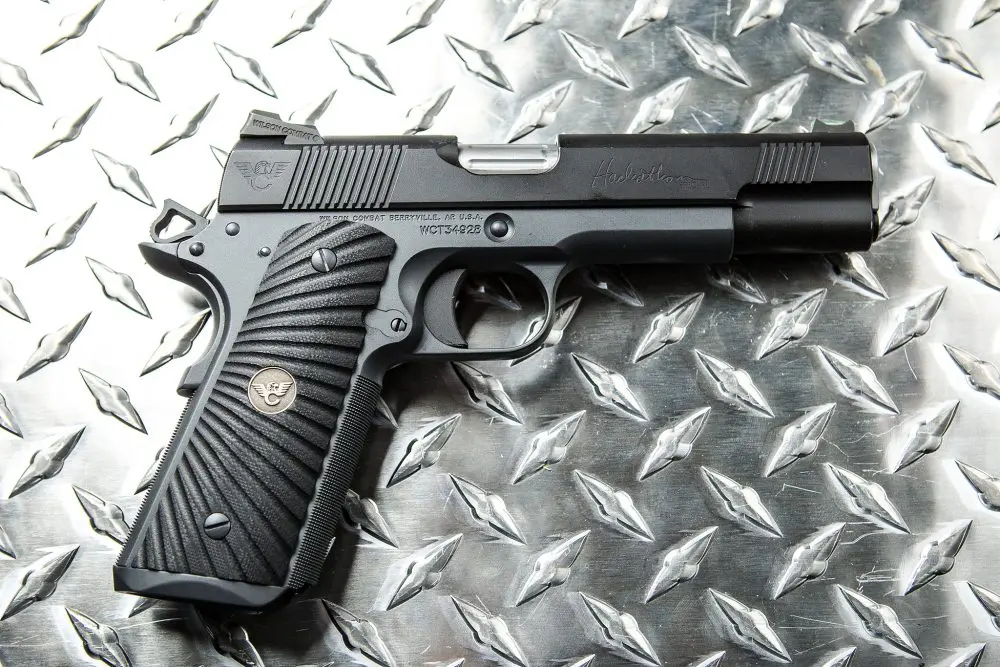
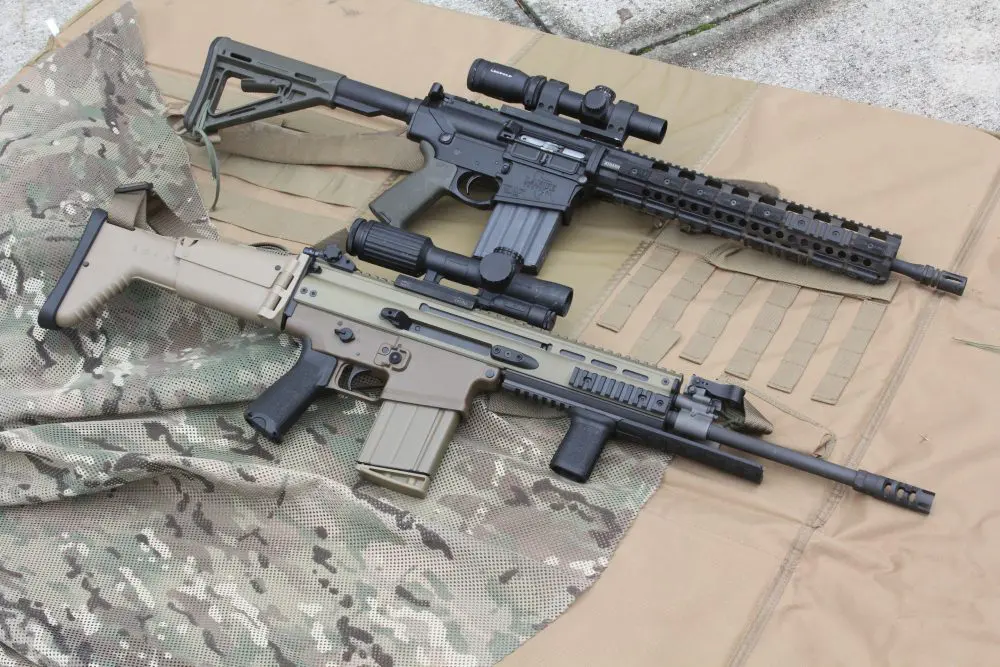
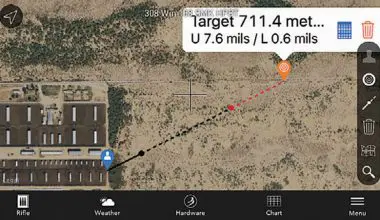
1 comment